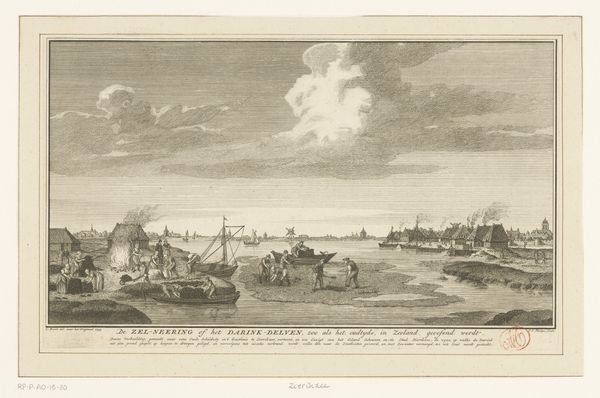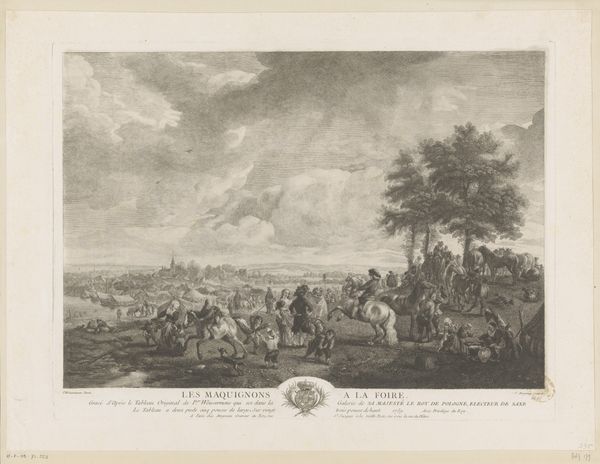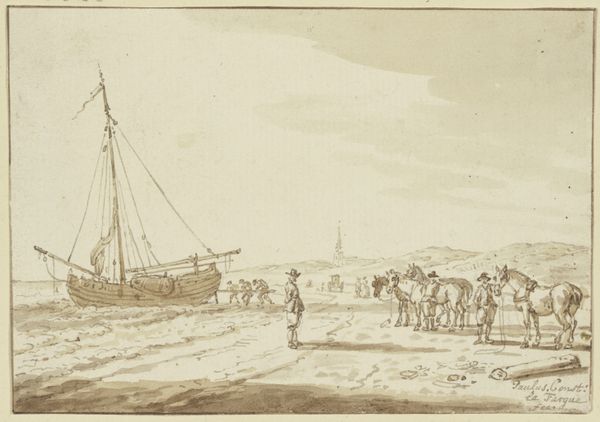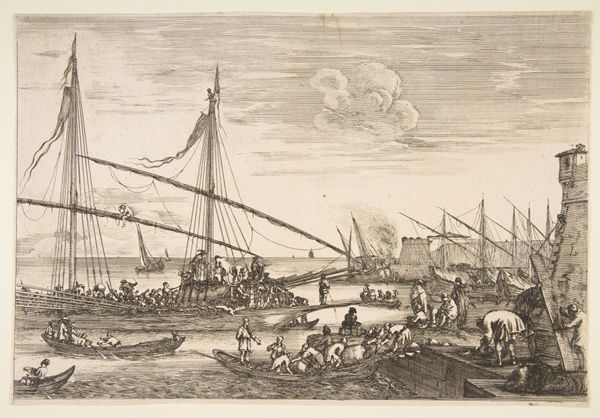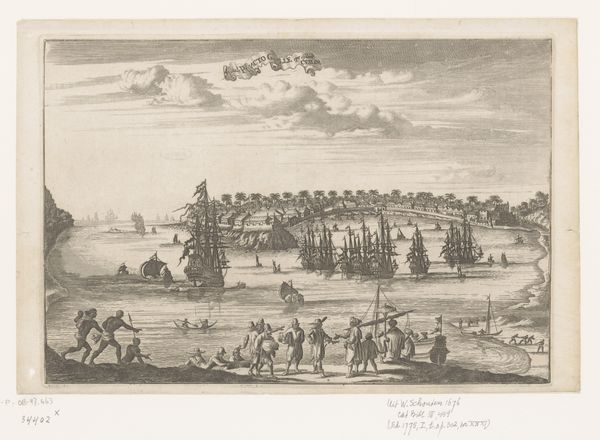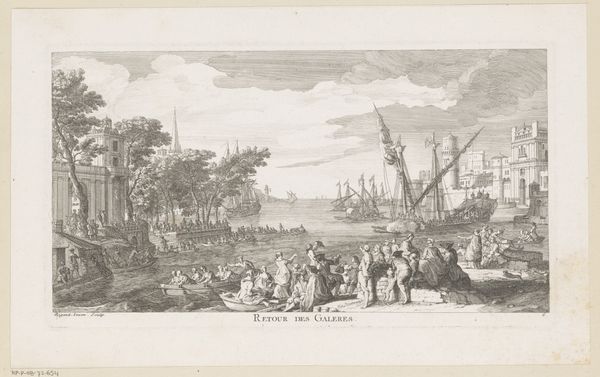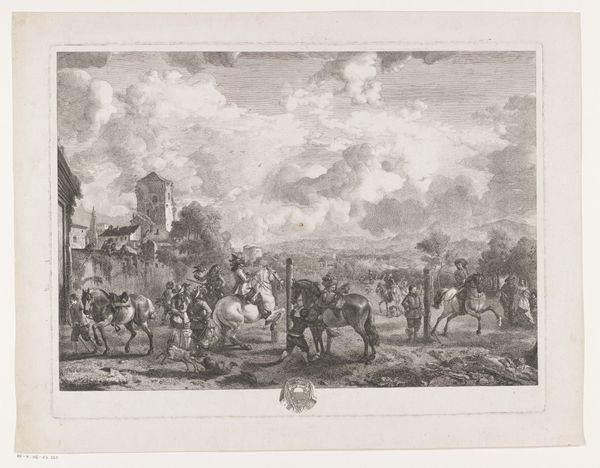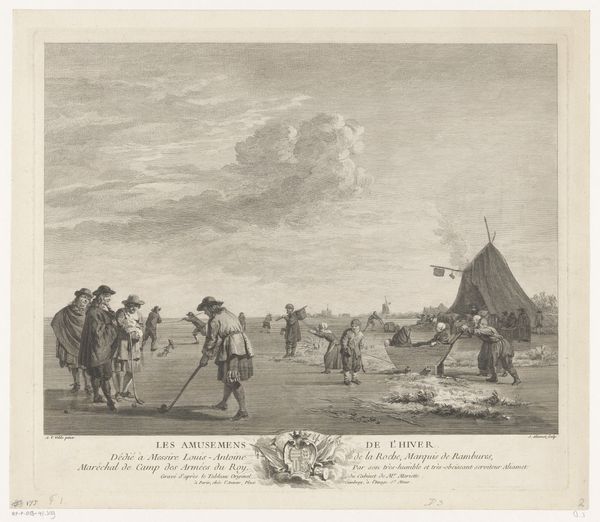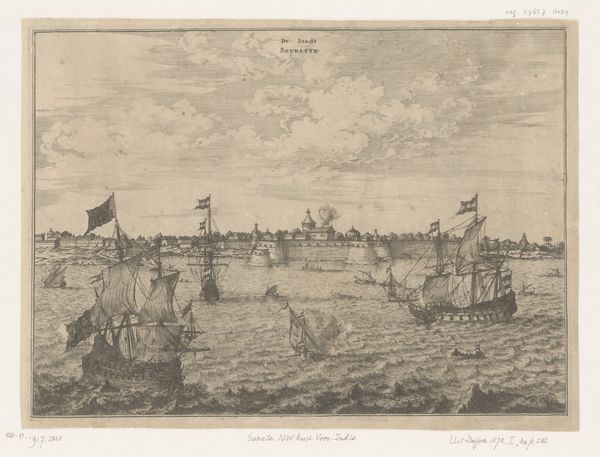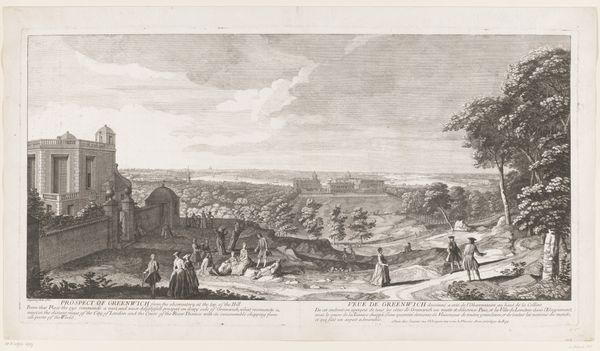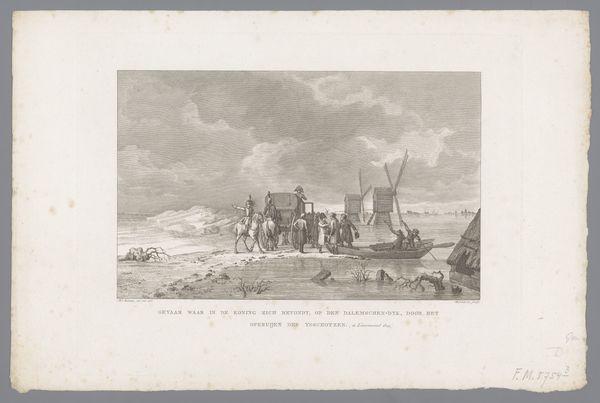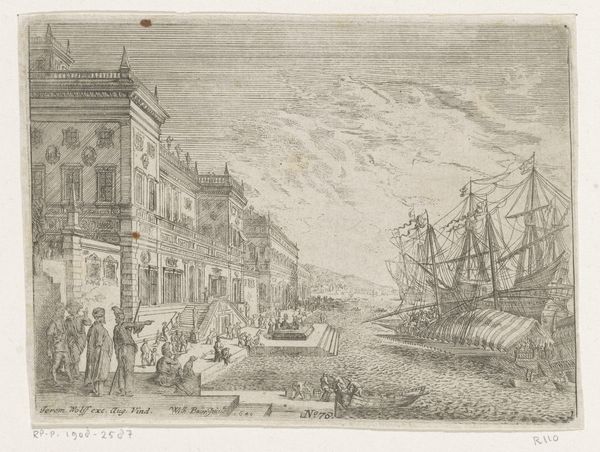
Prins Willem van Oranje op het strand van Scheveningen 1748 - 1815
0:00
0:00
emmanueljeandeghendt
Rijksmuseum
Dimensions: height 288 mm, width 376 mm
Copyright: Rijks Museum: Open Domain
Curator: Here we have “Prins Willem van Oranje op het strand van Scheveningen,” an engraving dating, roughly, to the late 18th century, attributed to Emmanuel Jean de Ghendt. I find myself immediately swept away to the breezy seaside—how about you? Editor: Immediately I notice how incredibly detailed it is, given it's an engraving. The marks, they delineate every element—the coach wheels churning in the sand, the frills on the riders' coats, the individually etched clouds. All that work… Curator: The composition feels remarkably casual for what must have been a quite staged and formalized visit, right? Look at the incidental details—the dogs bounding on the beach, the commoners going about their business. There’s this great feeling that we’ve just stumbled onto a real, breathing moment, don’t you think? Editor: Yes, but that’s partly the trick of it. See how meticulously the foreground figures are defined, contrasted to the softer, less detailed background? The engraving serves not to just document, but to ennoble, placing Willem in a continuous lineage. Even the beach is molded to reinforce his prominence. Curator: Mmm, true, true… And you think about the choice of a print. It’s not some unique painting for a select audience. The medium itself democratizes the image, reproducing it to disseminate this idea of Orange prestige widely. It also renders the creation quite time-consuming. How long might it take to create that kind of plate and make enough copies to send it far and wide? Editor: A testament to pre-industrial labor, exactly. The artist essentially became a skilled laborer, mass-producing symbolic capital. Curator: A poignant observation! All those little marks adding up to make much more. The small, reproducible form contrasts sharply with the grand status of the depicted event. Editor: Which I think adds yet another layer, the commodification of power! Something normally uncontainable, abstracted into image and endlessly reproduced. It really shows how craft enabled that kind of myth-building. Curator: It’s curious how much our perspectives can shift simply by changing the lens, isn’t it? Now I’m almost longing to investigate that printing process myself, if only to feel closer to that past. Editor: Exactly! Maybe that's the most powerful takeaway. It makes you ponder about all of those individual artisans and what it meant to materialize these political ideals through that repetitive act.
Comments
No comments
Be the first to comment and join the conversation on the ultimate creative platform.
